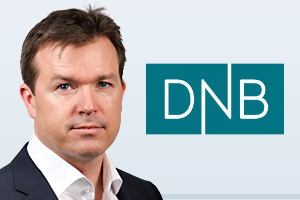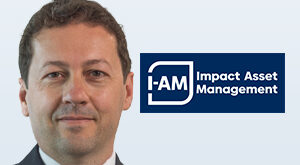
SJB | Korschenbroich, 18.09.2023.
Die asiatischen Märkte legten im Juli um 6,13 Prozent zu und entwickelten sich damit besser schwächer als die USA und Europa. Während Hongkong und China outperformten, entwickelten sich taiwanesische Aktien unterdurchschnittlich. In diesem freundlichen Marktumfeld verzeichnete der New Capital Asia Future Leaders Fund USD I Acc (WKN A2PFKL, ISIN IE00BGSXT619) eine Performance von +4,39 Prozent, entwickelte sich aber schwächer als seine Benchmark. In seinem aktuellen Monatsbericht für Juli analysiert EFG-FondsManager Chris Chan die jüngsten Marktentwicklungen und gibt Auskunft über Performance und Portfoliostruktur seines Asienfonds, der sich auf zukünftige Gewinner und Marktführer spezialisiert hat.
Asia markets (MSCI Asia ex Japan index) were up 6.13% in July, outperforming the S&P500 and Eurostoxx. China and Hong Kong outperformed in the month whilst Taiwan underperformed. Consumer Discretionary, Internet and Materials were the strongest performing sectors whilst IT was the weakest sector. Growth stocks were largely in line vs. the index during the month whilst quality stocks underperformed 2%.
Key performance & positioning updates
The Fund was down 174bp vs. the benchmark (MSCI Asia ex Japan) during July. Country allocation ex cash effect was marginally negative due to our underweight in outperforming Hong Kong and overweight in Indonesia that also underperformed in the month. Sector selection was neutral due to our overweight position in Consumer Discretionary offset by our overweight in Consumer Staples that was weak in July.
Market Update
Asia markets (MSCI Asia ex Japan index) were up 6.13% in July, outperforming the S&P500 and Eurostoxx. China and Hong Kong outperformed in the month whilst Taiwan underperformed. Consumer Discretionary/Internet and Materials were the strongest performing sectors whilst IT was the weakest sector. Growth stocks were largely in line vs. the index during the month whilst quality stocks underperformed 2%.
Hong Kong/China markets rallied in July as the government and People’s Bank of China (PBOC) announced further supportive measures following on from June’s rate cuts. That said, such rally was more based on the wording of such announcements rather than on explicit actionable outcomes. For example, for the much maligned property sector, investors focused on the removal of wording typically present in prior sector commentary around Politburo events, notably that ‘property is for living rather than speculation’. The market took this to suggest authorities were perhaps more willing to ‘allow’ home prices to appreciate to encourage buying. There was also a more positive tone towards internet platforms, essentially encouraging state banks to lend to such companies to support their investments in areas such as start ups. This also was seen to be a turnaround in approach given just 18 months ago, authorities were warning these same companies from ‘disorderly’ capital expansion that led to job cuts across the sector amidst a pull back in internet investment. The macro data remained a mixed affair, with manufacturing PMI coming in better than expected for the 2nd month in a row but remaining contractionary. Domestic new order sentiment did pick up as PPI (payment protection insurance) levels looked to have bottomed up, potentially leading to a domestic re-stocking cycle. Service demand, at least by the official reading, continued to moderate off a high base as re-opening momentum starts to wane. Hotel bookings remain above 2019 levels as evidence of such high base. EV (electric vehicles) sales were generally seen stronger in the month in part spurred by prior price cuts and subsidy extensions. Property sales weakened further, with home sales -30% y-o-y leading to further concerns in the month about developer’s ability to pay back bond coupons.
July was characterized as a high beta month, reflective in both high PE (price-toearnings) growth stocks (Internet/EV/AI (artificial intelligence)) and deep cyclical value (Metals) performing strongly, but typically these are lower quality (low return of equity) companies as shown by quality underperformance in the month.
Fund Performance & Positioning
The Fund was down 174bp vs. the benchmark (MSCI Asia ex Japan) during July. Country allocation ex cash effect was marginally negative due to our underweight in outperforming Hong Kong and overweight in Indonesia that also underperformed in the month. Sector selection was neutral due to our overweight position in Consumer Discretionary offset by our overweight in Consumer Staples that was weak in July.
Whilst Taiwan underperformed as a market, there was a significant rally within IT in AI stocks, some up 50-70% in the month albeit corrected in the final days of July. We own Foxconn Industrial Internet which essentially has the same business model (AI server exposure) as many of the rallied names, yet given A share listing in part, lagged 40%+ but now is valued at 15x PE vs. Taiwan equivalents 25x. In Korea, all EV related names rallied such as large cap Posco, traditionally a steel maker yet up 70% in July due to announced plans to increase EV material exposure such as lithium and cathodes (through subsidiaries). We also own LG ESS. Retail investing largely drove such rallies in Korea and we see it as unsustainable and overvalued given the core business remains lacklustre on weak China demand. Higher beta China EV start ups such as Nio and XPeng also were up similar levels, however we prefer the higher quality BYD which has benefitted from a vertically integrated supply chain and has recently had export success whilst domestic sales remain strong.
The worst contributor during the month was Parade Technologies in Taiwan which was victim of the Taiwan underperformance and rotation into AI related names given Parade is seen to have less AI exposure than other IT stocks albeit like every IT name, does indeed have some. They produce high speed interface products related to Apple notebooks and display but also have server exposure through other products. Their recent results were weaker than some PC related peers given non Apple brands were earlier to restock than Apple which was late to cut inventory vs. peers. This is expected to reverse over the next quarter and Parade have proven themselves to perform during the downturn with stable margins reflecting their relative pricing power even against Apple as they have dominant market share in their product whilst also benefitting from an upgrade cycle in HSI (Hang Seng Index).
Outlook
One of the reasons consumer confidence and spending has been weak in China is because of the lack of wealth generation recently through typical channels of property (prices) and the stock market. Coupled with high youth unemployment and lack of public sector wage hikes, there is little to give confidence to go out and buy large ticket items for the average China consumer. This is likely why the leadership may now be shifting narrative to allowing the idea that property is still worth buying (in part for capital appreciation potential) as well as trying to stimulate the stock market through state newspaper articles suggesting now is a good time to buy as well as attempting to increase liquidity through market makers. On the youth unemployment side, a marked shift in tone towards the internet platforms is clear with a late acknowledgment of the job creation potential of such sector and how the country needs such companies to invest and therefore create jobs. We see this as certainly incrementally positive to addressing structural issues within the economy beyond the somewhat ineffective recent measures of rate cuts given as mentioned, it is a confidence issue of future income and wealth expectations rather than affordability. That said, this will not be solved overnight and for the meantime, macro data remains relatively weak albeit it has certainly not dropped off a cliff as confirmed by PMI and bottom up consumer date/commentary. Valuations remain supportive relative to history and US markets, and thus will remain sensitive to further policy support as well as incremental fundamental improvements resulting from such. This leaves us relatively neutral in positioning, preferring overweight in A shares vs. underweight in Hong Kong.
We remain underweight Korea and Taiwan albeit in the latter we own high beta IT names. Morgan Stanley recently downgraded Taiwan (they upgraded India) on the basis that valuations are now unsupportive at +1 standard deviation above the norm. This is a view we have had for the past 2-3 months with sustainable demand recovery yet to be seen across key components of PC, smartphone and servers and thus earnings continue to be revised down. Even if AI is unquestionably leading to strong demand across related products, the most exposed companies typically will have 10-15% revenue exposure for 2023 and yet many of these names have rallied 100%+ YTD. Server names in July rallied significantly on such AI server exposure, yet reported revenue trends -25% q-o-q given the drop in demand for non AI servers.
We remain positive on India, who just reported an earning season with the highest beat ratio in 2 years. This was led by industrials, backed up by typical industrial commentary and trends, backed by the strong public and private capex cycle we have mentioned for a while. Consumer trends remain more mixed having been strong for almost 18 months now and coming off a high base.
Fund Manager
Chris Chan
Portfolio Manager
Hong Kong







